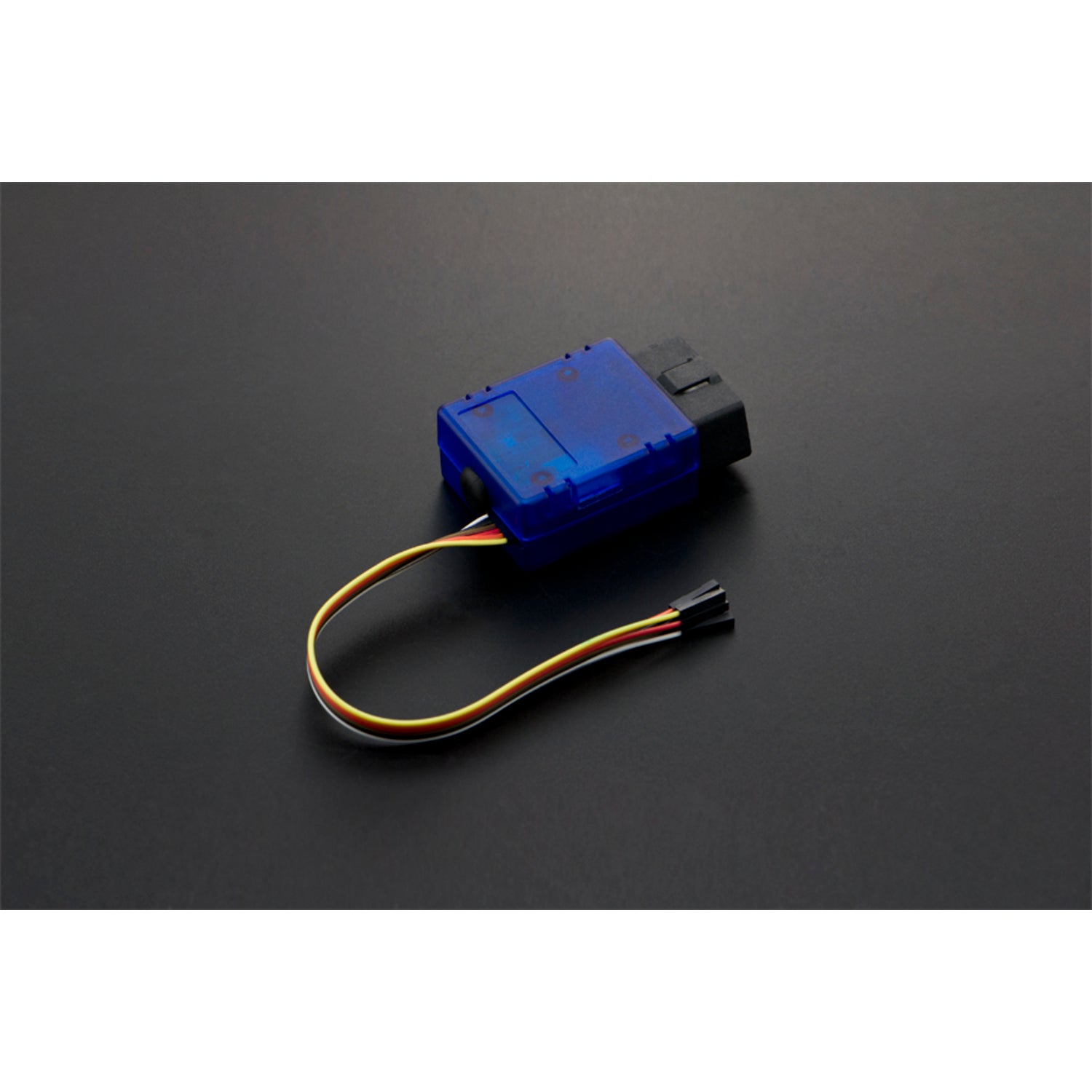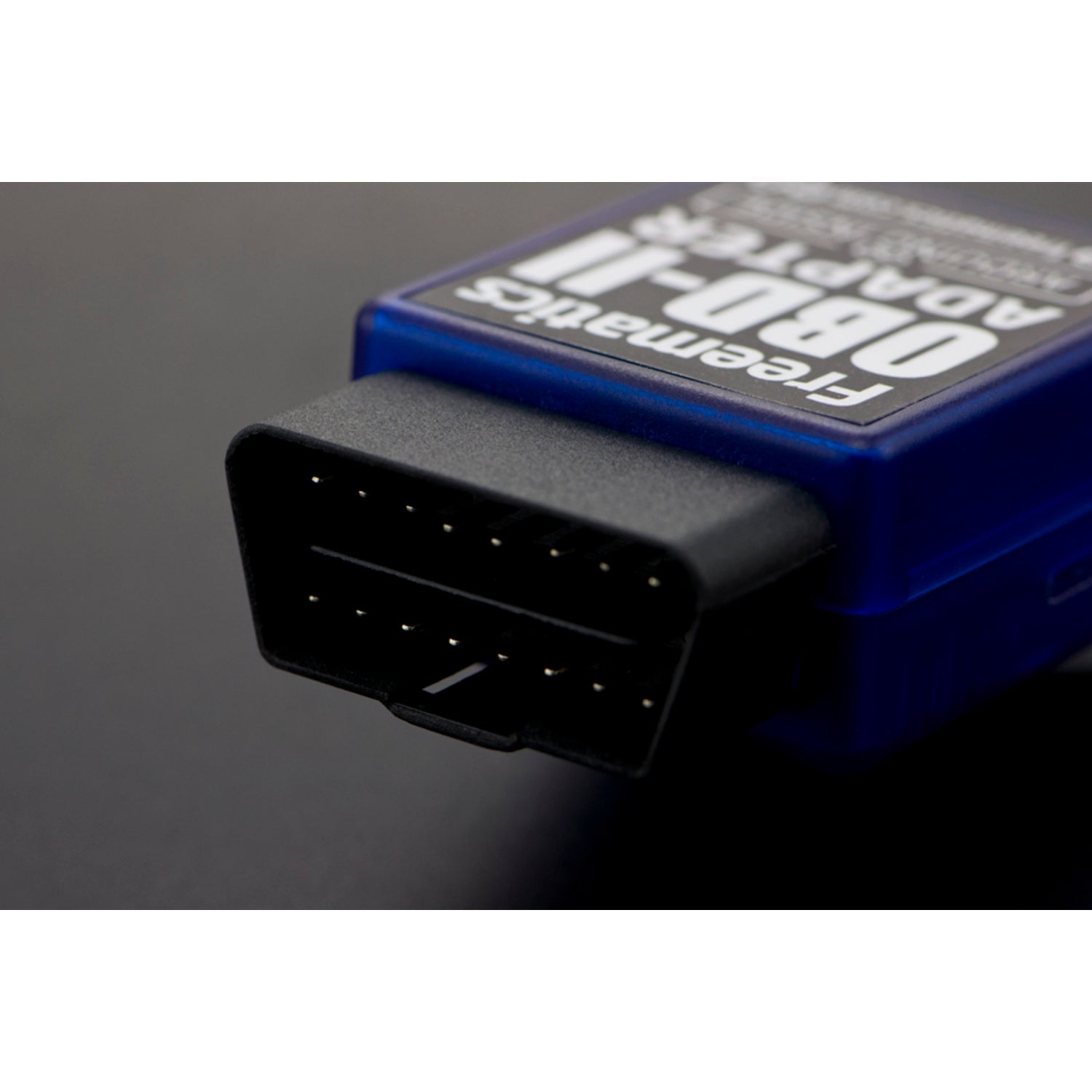The Freematics Vehicle Data Logger V3 is now discontinued. We highly recommend the Freematics Vehicle Data Logger V4 as a great replacement. This Arduino-compatible OBD-II programmable data logger is a powerful tool. It comes with an OBD-II data reader, a high-resolution GPS receiver, a 9-axis motion sensor, a microSD slot for up to 32GB of data storage, and a BLE wireless module. All components are easily accessible via Arduino libraries. Key features include an Arduino-compatible design, a 16-pin OBD-II connector, fast access (up to 100Hz) to OBD-II PIDs from the vehicle ECU, a built-in voltmeter for car battery voltage, a 9-axis MEMS module, Bluetooth Low Energy and SPP modules for wireless data communication, and a 5Hz U-Blox G6010 GPS module with a ceramic antenna. The main controller, an ATMega328P, is the same as on an Arduino UNO and can be reprogrammed using the standard Arduino IDE. You can easily access OBD-II data and onboard peripherals through well-maintained Arduino libraries. Compiled sketches can be downloaded to the adapter via ICSP using USBasp or Arduino as ICSP. This product can serve as an unattended vehicle data logger, recording driving routes along with real-time vehicle and sensor data. The onboard Bluetooth module allows connectivity with mobile devices for live data viewing and history data analysis. It also acts as a wireless data bridge between the vehicle and software applications, with the advantage of caching and storing data inside the adapter to prevent data loss. Available documents include the user guide, firmware source code repository, prebuilt firmware binaries, a telematics data conversion utility, and a driver for USBasp. The shipping list includes one Freematics Vehicle Data Logger V3, and optionally, a USBasp programmer and an OBD-II extension cable.


Using the Freematics Vehicle Data Logger V3 is easy. First, connect the device to your vehicle's OBD-II port using the 16-pin connector. If needed, you can use the optional OBD-II extension cable for better access. Once connected, the device will start collecting data from your vehicle's ECU. To program the device, you can use the standard Arduino IDE. Just make sure you have the necessary Arduino libraries installed. You can download compiled sketches to the adapter using USBasp or Arduino as ICSP through the ICSP (SPI pins). For data storage, insert a microSD card into the slot. It can support cards up to 32GB. When it comes to data viewing and analysis, connect your smartphone or tablet to the device via Bluetooth. You can then use it as a terminal to view live data or analyze historical data. Remember to keep the device clean and dry. Avoid exposing it to extreme temperatures or moisture. If you're not using the device for a long time, remove the microSD card and store it in a safe place. Also, check the car battery voltage regularly using the built-in voltmeter to ensure the device is getting proper power. If you encounter any issues, refer to the Freematics Vehicle Data Logger Users Guide for more detailed troubleshooting steps.